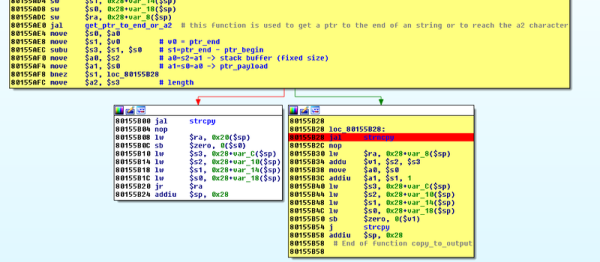Many stop lights at street intersections display a countdown of the remaining seconds before the light changes. If you’re like me, you count this time in your head and then check how in sync you are. But did you know that if the French had their way back in the 1890s when they tried to introduce decimal time, you’d be counting to a different beat? Did you know the Chinese have used decimal time for millennia? And did you know that you may have unknowingly used it already if you’ve programmed in Linux? Read on to see what decimal time is along with the answers to these questions.
Day: December 14, 2016
TP-Link Debug Protocol Gives Up Keys To Kingdom
If the headline makes today’s hack sound like it was easy, rest assured that it wasn’t. But if you’re interested in embedded device hacking, read on.
[Andres] wanted to install a custom OS firmware on a cheap home router, so he bought a router known to be reflashable only to find that the newer version of the firmware made that difficult. We’ve all been there. But instead of throwing the device in the closet, [Andres] beat it into submission, discovering a bug in the firmware, exploiting it, and writing it up for the manufacturer. (And just as we’re going to press: posting the code for the downgrade exploit here.)
This is not a weekend hack — this took a professional many hours of serious labor. But it was made a lot easier because TP-Link left a debugging protocol active, listening on the LAN interface, and not requiring authentication. [Andres] found most of the information he needed in patents, and soon had debugging insight into the running device.
Continue reading “TP-Link Debug Protocol Gives Up Keys To Kingdom”
Jumper Cables Block Trains
Standing Rock, North Dakota has been the site of a major protest this year against the Dakota Access Pipeline project. Protesters have sought to delay the pipeline’s progress by a wide variety of means, and both sides in the conflict have been accused of a variety of misdeeds.
An anonymous group supporting the protesters has released a video describing how they stop trains without the use of physical barricades. The video begins with police removing automobiles used to block the tracks and escorting trains through level crossings, showing how these traditional methods have been ineffective.
The video then goes on to outline what is described as a “sneaky” way of halting trains. Most railroads use what is known as a track circuit — a current run through the rails of the track detects when a train passes over it by the axles completing an electrical circuit between the two. By using a standard automotive jumper cable to connect the two rails together instead, the circuit is completed and falsely indicates to the railway signalling system that a train is present on the track in question. Due to the safety-critical nature of the railway, no trains can be run on the track until the short circuit is removed, else there is a great risk of collisions between trains on the network.
Intended as a practical guide, strategies to maximize disruption are outlined, such as hiding the cables under snow and painting them in black to evade detection as long as possible. Instructions on how to best make a solid connection to the rails are also shared.
It goes without saying that interfering with major infrastructure is risky, dangerous, and highly illegal. Protesters have already been arrested for physically blocking trains. Perpetrators of this method will surely be arrested if caught, and circumventing the technology could easily result in harsher charges associated with electronic security and safety systems. This is sabotage (deliberately obstructing) and undermines the validity of peaceful protest.
This shows how ingenuity is often spawned by turmoil and frustration. Reflect on human nature, and catch the video below the break.














